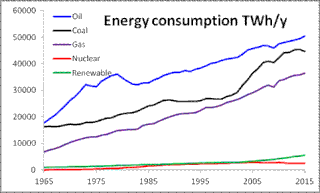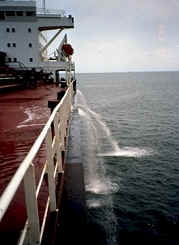Related Research Articles

The International Civil Aviation Organization is a specialized agency of the United Nations. It changes the principles and techniques of international air navigation and fosters the planning and development of international air transport to ensure safe and orderly growth. Its headquarters is located in the Quartier International of Montreal, Quebec, Canada.

The International Maritime Organization is a specialised agency of the United Nations responsible for regulating shipping. The IMO was established following agreement at a UN conference held in Geneva in 1948 and the IMO came into existence ten years later, meeting for the first time in 1959. Headquartered in London, United Kingdom, the IMO currently has 174 member states and three associate members.

The International Radiotelephony Spelling Alphabet, commonly known as the NATO phonetic alphabet or the ICAO phonetic alphabet, is the most widely used radiotelephone spelling alphabet. The ITU phonetic alphabet and figure code is a variant.

The electricity sector in Norway relies predominantly on hydroelectricity. A significant share of the total electrical production is consumed by national industry.

Fuel oil is a fraction obtained from petroleum distillation, either as a distillate or a residue. In general terms, fuel oil is any liquid fuel that is burned in a furnace or boiler for the generation of heat or used in an engine for the generation of power, except oils having a flash point of approximately 42 °C (108 °F) and oils burned in cotton or wool-wick burners. Fuel oil is made of long hydrocarbon chains, particularly alkanes, cycloalkanes, and aromatics. The term fuel oil is also used in a stricter sense to refer only to the heaviest commercial fuel that can be obtained from crude oil, i.e., heavier than gasoline and naphtha.

Renewable energy plays an important and growing role in the energy system of the European Union. The share of energy from renewable sources in gross final consumption of energy was 18% in 2018. This is double the share in 2004 with 8.5%. The Europe 2020 strategy includes a target of reaching 20% of gross final energy consumption from renewable sources by 2020, and at least 32% by 2030. These figures are based on energy use in all its forms across all three main sectors, the heating and cooling sector, the electricity sector and the transport sector.

World Fuel Services Corporation is an energy, commodities, and services company based in Miami, Florida. The company ranked No. 91 in the 2018 Fortune 500 list of the largest United States corporations. WFS focuses on the marketing, trading, and financing of aviation, marine and ground transportation fuel commodities and related services. As of 2013, WFS also operates in natural gas and power.
Electric energy consumption is the form of energy consumption that uses electric energy. Electric energy consumption is the actual energy demand made on existing electricity supply.

The environmental impact of aviation occurs because aircraft engines emit heat, noise, particulates and gases which contribute to climate change and global dimming. Airplanes emit particles and gases such as carbon dioxide, water vapor, hydrocarbons, carbon monoxide, nitrogen oxides, sulfur oxides, lead, and black carbon which interact among themselves and with the atmosphere.

Energy in the United States comes mostly from fossil fuels: in 2010, data showed that 25% of the nation's energy originates from petroleum, 22% from coal, and 22% from natural gas. Nuclear energy supplied 8.4% and renewable energy supplied 8%, mainly from hydroelectric dams and biomass; however, this also includes other renewable sources like wind, geothermal, and solar. Data from 2019 shows that 37% of the nation's energy originates from petroleum, 32% from natural gas, 11% from coal, 11% from renewable energy, and 8% from Nuclear energy.

World energy consumption is the total energy produced and used by the entire human civilization. Typically measured per year, it involves all energy harnessed from every energy source applied towards humanity's endeavors across every single industrial and technological sector, across every country. It does not include energy from food, and the extent to which direct biomass burning has been accounted for is poorly documented. Being the power source metric of civilization, world energy consumption has deep implications for humanity's socio-economic-political sphere.
The page is about climate change in European Union: the impact of the European Union on climate change, the impacts of climate change on the European Union and the efforts of the European Union to stop climate change.

MS Polarfront was a Norwegian weather ship located in the North Atlantic Ocean. It was the last remaining weather ship in the world, maintained by the Norwegian Meteorological Institute.

Norway is a heavy producer of renewable energy because of hydropower. Over 99% of the electricity production in mainland Norway is from 31 GW hydropower plants. The average hydropower is 133 TWh/year. There is also a large potential in wind power, offshore wind power and wave power, as well as production of bio-energy from wood. Norway has limited resources in solar energy, but is one of the world's largest producers of solar grade silicon and silicon solar cells.
MarTEL is a standardised test of maritime English language proficiency, through an interactive online learning platform. It was created under the European Union's Leonardo da Vinci funding stream, in combination with the Lifelong Learning Programme, and was established in 2007.

The environmental impact of shipping includes air pollution, water pollution, acoustic, and oil pollution. Ships are responsible for more than 18 percent of some air pollutants.

Germany's electrical grid is part of the Synchronous grid of Continental Europe. In 2019, Germany produced 516 TWh of electricity of which 46% was from renewable energy sources, 29% from coal, and 10% from natural gas. This is a major change from 2018, when a full 38% was from coal, only 40% was from renewable energy sources, and 8% was from natural gas.
Worldwide energy supply is the global production and preparation of fuel, generation of electricity, and energy transport. Energy supply is a vast industry.

Heavy Fuel Oil (HFO) is a category of fuel oils of a tar-like consistency identified as a "worse case substance". Also known as bunker fuel, or residual fuel oil, HFO is the result or remnant from the distillation and cracking process of crude oil. For this reason, HFO is contaminated with several different compounds including aromatics, sulfur and nitrogen, making emission upon combustion more polluting compared to other fuel oils. HFO is predominantly used as a fuel source for marine vessel propulsion due to its relatively low cost compared to cleaner fuel sources such as distillates. The use and carriage of HFO on-board vessels presents several environmental concerns, namely the risk of oil spill and the emission of toxic compounds and particulates including black carbon. Presently, the use of HFOs is banned as a fuel source for ships travelling in the Antarctic as part of the International Maritime Organization's (IMO) International Code for Ships Operating in Polar Waters. For similar reasons, an HFO ban in Arctic waters is currently underway as IMO committed to the prohibition of the use or carriage of HFO within the next several years.
References
- ↑ Balances definitions
- ↑ Planes and ships can't escape Paris climate commitments
- ↑ Final consumption website iea.org The reference year is 2016. Let us notice that 1 Mtoe/a=11.63 TWh/a